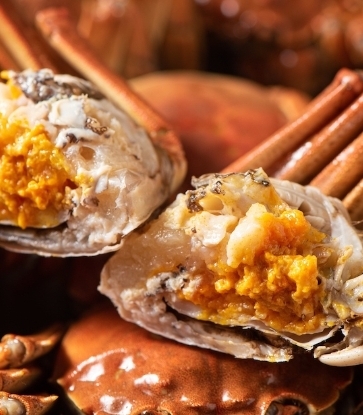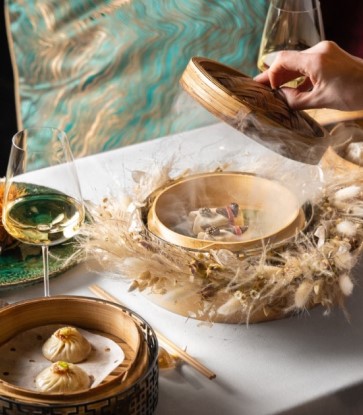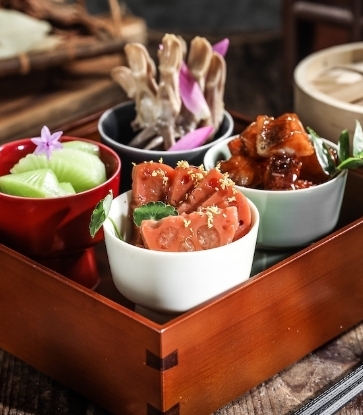Scallion and ginger are typically steamed with the barramundi to enhance its flavour. Instead of relegating them to the sidelines, Yellow Pot’s Chinese chef Sebastian Goh slathers a lush green scallion and ginger pesto on the sliced fish fillets.
He says: “The pesto transforms the fish as the fragrant flavours of the ginger, spring onion and coriander take centre stage in a more concentrated and unique way.”

Achieving homespun flavours inevitably involves slaving away in the kitchen and Goh hopes to offer a slice of hearty home cooking through his menu at Yellow Pot, which draws references from various culinary provinces in China. Much of the food involves the use of organic and sustainably-sourced ingredients to yield innovative twists in classic Chinese cuisine.
Goh, who previously helmed Chinese restaurant Szechuan Court in Fairmont Singapore, adds: “Due to fast-paced modern lives, many diners don't have much time to cook at home. We want to re-create home-cooked flavours for them in the restaurant.”

One of Goh’s creation is a lemongrass, garlic, shallots and celery marinade that doubles as a natural meat tenderiser. The marinade is featured in one of Yellow Pot’s most popular dishes, seared pork cheeks with cumin, chilli and mango ($12).
For the Peking duck, the lacquered bird is roasted over hickory wood chips after being seasoned for two days in a house-made fermented bean curd marinade that is a flavourful blend of star anise, bay leaf, fermented tofu, cinnamon and locally-produced five-spice powder.

Goh was inspired by the pairing of preserved plum with teas to come up with this appetiser that perks up the palate. He says: “This appetiser brings out the sweetness of the tomatoes that is complemented with the tartness from the plum juice.”
Besides cooking at Yellow Pot, Goh is part of the culinary team that is behind its sister hotel, Six Senses Maxwell, slated to open in October in another conservation shophouse in Chinatown. The boutique hotel will have five F&B outlets, including an all-day Southern European Brasserie, a Peranakan restaurant that also offers afternoon tea that pairs Nyonya kueh with teas from the neighbouring teahouse Yixing Xuan, as well as two bars on the ground floor and one up on the roof.
Recipe: Steamed Barramundi With Scallion Ginger Pesto
Ingredients
4 Kühlbarra barramundi slices (200g)
5g Chinese wine
3g sesame oil
For fish stock
Fish bone from filleting barramundi
A handful of roasted anchovies
20g ginger, chopped
20g garlic (skin peeled), chopped
10g leek, chopped
10g spring onion, chopped
For scallion ginger pesto
30g young ginger (skin peeled)
20g spring onions
5g coriander
10g garlic (skin peeled)
2g Himalayan rock salt
2g brown sugar
30g olive oil
Method
1. Fillet barramundi to 50g per piece. Set aside the fish bones for the preparation of fish stock.
2. Lightly marinate the barramundi fillets with Chinese wine (huatiao chiew) and sesame oil.
3. Steam the barramundi for about 5 minutes. Set aside.
4. To make the fish stock, add 2 tablespoons of olive oil into a pot. Stir-fry the fish bones, ginger and leeks until they turn golden brown.
5. Pour 500ml of water into the pot, add roasted anchovies, garlic and spring onions and simmer the mixture over low heat till it gets reduced to 100ml. Set aside.
6. To make the pesto, chop the young ginger, spring onions, coriander and garlic finely.
7. Add the chopped ingredients into an electric blender. Add the Himalayan rock salt, brown sugar and olive oil into the mixture. Blend till the mixture becomes smooth.
8. Place the steamed barramundi fillets on a plate and pour the fish stock over the fish.
9. Spread a layer of scallion ginger pesto on each fillet before serving.
RELATED: Click here for more recipes






















